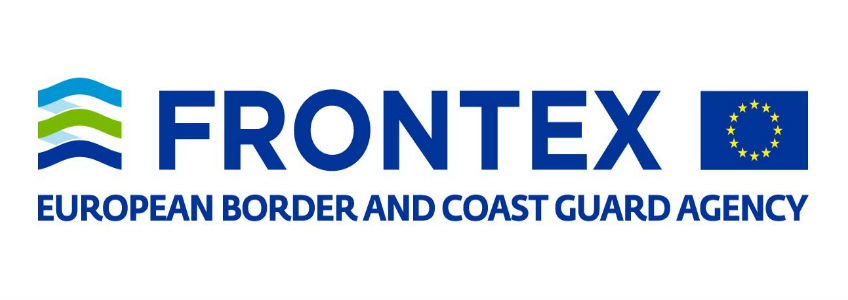
The ETIAS Central Unit is one of the entities responsible for running the ETIAS system. It will ensure the application process runs smoothly and guarantee the efficiency of the program.
Travel to Europe With ETIAS
ETIAS – the European Travel Information and Authorization System – will grant authorization to travelers from visa-exempt countries to visit the Schengen Area.
There are more than 50 countries whose citizens currently do not need a visa to enter the Schengen zone. The United States is one of these countries.
US citizens will continue to enjoy their visa-free status. However, from 2026, American nationals will need to complete an ETIAS application to visit any of the Schengen member countries.
ETIAS Central Unit and Security Databases
The ETIAS system is will make travel to Europe safe and easy. All eligible visitors need to do is complete their ETIAS registration form with their personal and passport details.
The ETIAS program is an automated system. The passenger’s data will be automatically cross-checked against several security databases. Only applications that set off an alarm will need a manual check.
The ETIAS Central Unit (ECU), managed by Frontex, will review and verify applications that need a manual check. If an application needs to be escalated, it will then be sent to the ETIAS National Units.
The ETIAS system will check the traveler’s data against the following security databases, which are divided into 4 groups:
Existing EU information systems:
- Schengen Information System (SIS)
- Visa Information System (VIS)
- Europol Data
Upcoming EU information systems:
- Entry/Exit Systems (EES)
- New Eurodac Database
Interpol Databases:
- Interpol Stolen and Lost Travel Document database (SLTD)
- Interpol Travel Documents Associated with Notices database (TDAWN)
- A dedicated ETIAS watchlist and specific risk indicators.
Most travelers will get their ETIAS visa waiver within 72 hours after submitting their application, provided they pass the automated check.
How Will the ETIAS Central Unit Work?
The ETIAS Central Unit is managed by the EU border agency Frontex. It is in charge of reviewing ETIAS visa waiver requests from foreign travelers that have not been approved by the automated system.
It will revise an ETIAS application in case it has been flagged for manual processing.
The ECU is also responsible for the following:
- Ensuring recorded data from applications is correct and up to date
- Regular audits of ETIAS processes
- Providing information about ETIAS to the public
- Assisting both carriers and travelers
Why would an ETIAS application be flagged?
There are different reasons why an application might be flagged. One of these reasons is if a traveler’s passport was reported lost or stolen.
An ETIAS application could also be flagged if the system identifies discrepancies between the details entered and the information on the passport.
Therefore, it is extremely important to introduce details accurately when applying for ETIAS.
ETIAS Central Unit: Respecting Travelers’ Data
The European Union takes a person’s personal data very seriously.
All information provided by a foreign national will be treated carefully and used only to authorize travel to the Schengen Area.
The ETIAS Central Unit will make sure that all ETIAS National Units respect the rights of travelers.
Additionally, they have introduced and established policies to guarantee that procedures are transparent across all the institutions involved.
Who Runs the ETIAS Central Unit?
Frontex, the European Border and Coast Guard Agency, is in charge of setting up and running the ETIAS Central Unit.
The ETIAS Central Unit will operate on a 24/7 basis.
These are some of the tasks that fall under their jurisdiction:
- Verifying a traveler’s identity
- Defining, testing, implementing, evaluating, and revising specific risk indicators
- Carrying out frequent audits
- Monitoring the impact on travelers’ fundamental rights, privacy rules, and data protection
- Ensuring data is properly stored and recorded according to EU regulations
- Providing up-to-date information about ETIAS to the public
- Operating the Carriers Assistance Center and establishing how to best offer support to travelers
The first batch of ETIAS Central Unit operators graduated in January 2022. These 28 certified operatives underwent an intensive 3-month training course, and it’s expected that an additional 200 staff members will be hired by the end of 2024.
ETIAS Central Unit and ETIAS National Units
The ETIAS Central Unit will work with ETIAS National Units to make sure the system operates to the best of its ability.
By working together, both ETIAS bodies can guarantee that they safeguard the region’s external border security.
Each member state of the Schengen Area will have an ETIAS National Unit.
Responsibilities of an ETIAS National Unit
The following are among the main responsibilities of the ETIAS National Units:
Conducting ETIAS risk assessments
ETIAS National Units are responsible for conducting risk assessments on applications forwarded by the ETIAS Central Unit.
The Central Unit first revises flagged applications. Suppose it confirms there’s a match between the data contained in a flagged application and existing security databases. In that case, it is immediately sent to the National Unit of the country of the traveler’s first intended entry for further review.
NOTE: When applying for ETIAS, it is necessary to indicate the Schengen country where the traveler plans to enter first, even if they plan to visit other countries too.
It is the job of the ETIAS National Unit to assess whether the traveler poses a threat to the Schengen Area before they can grant the ETIAS visa waiver.
This only occurs when an ETIAS application has gone through manual revision and there’s been a match with security alerts.
Most applications are expected to be approved within minutes and without any issues or delays.
Final decisions on accepting foreign visitors’ ETIAS
After carefully evaluating an application forwarded by the ETIAS Central Unit, the National Unit is in charge of making the final decision.
All ETIAS National Units are expected to follow protocol and act according to the ETIAS guidelines.
Provide travelers with ETIAS appeal procedures
In the case the ETIAS National Unit has decided to turn down a traveler, it is their responsibility to contact them.
They will provide the traveler with the necessary information on how to proceed in case they choose to appeal the denial of their ETIAS application.
Manage the ETIAS watchlist with Europol
ETIAS National Units must work with Europol in managing a watchlist, or in other words, keeping an updated list of travelers that are considered high-risk.


